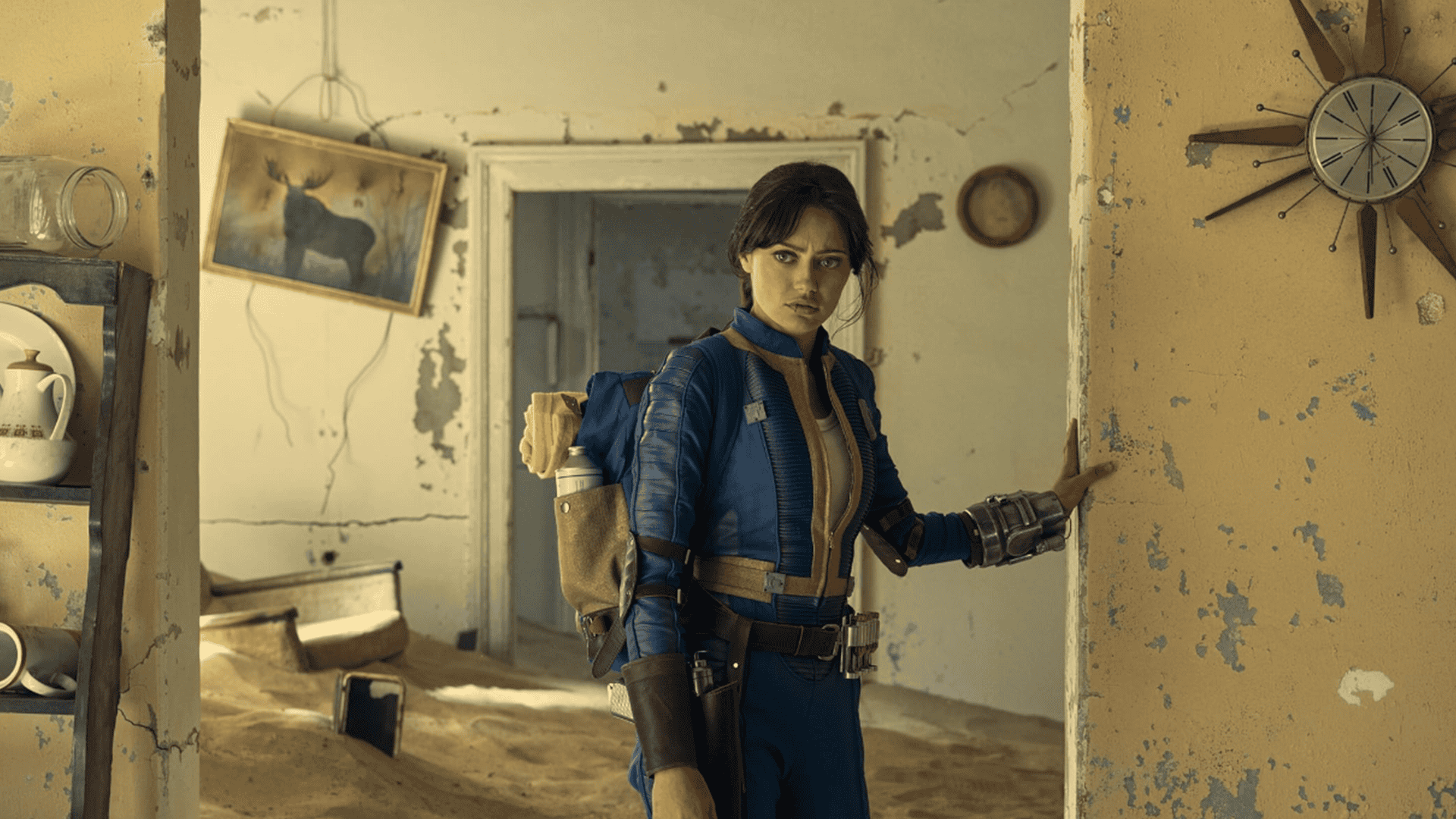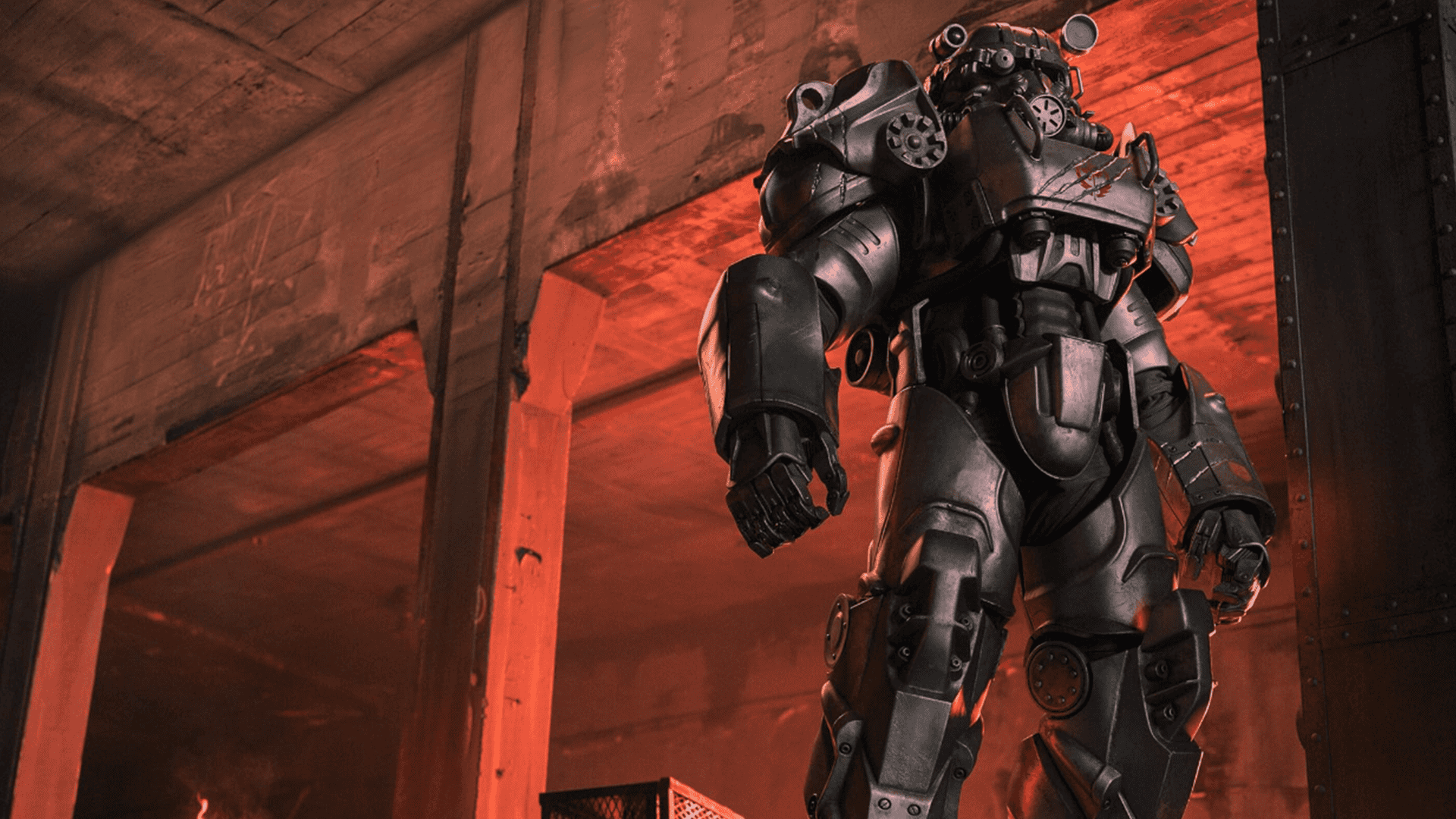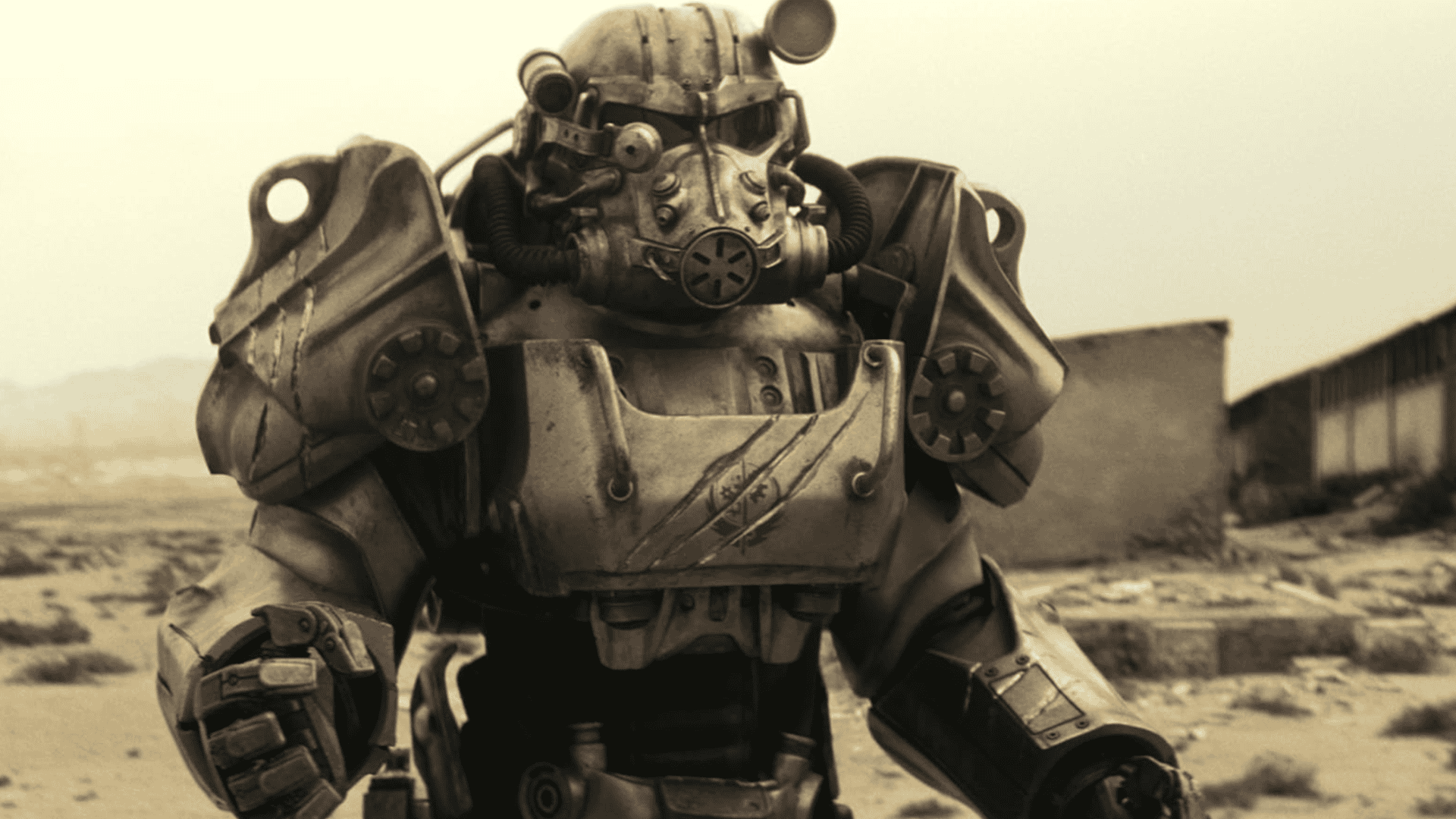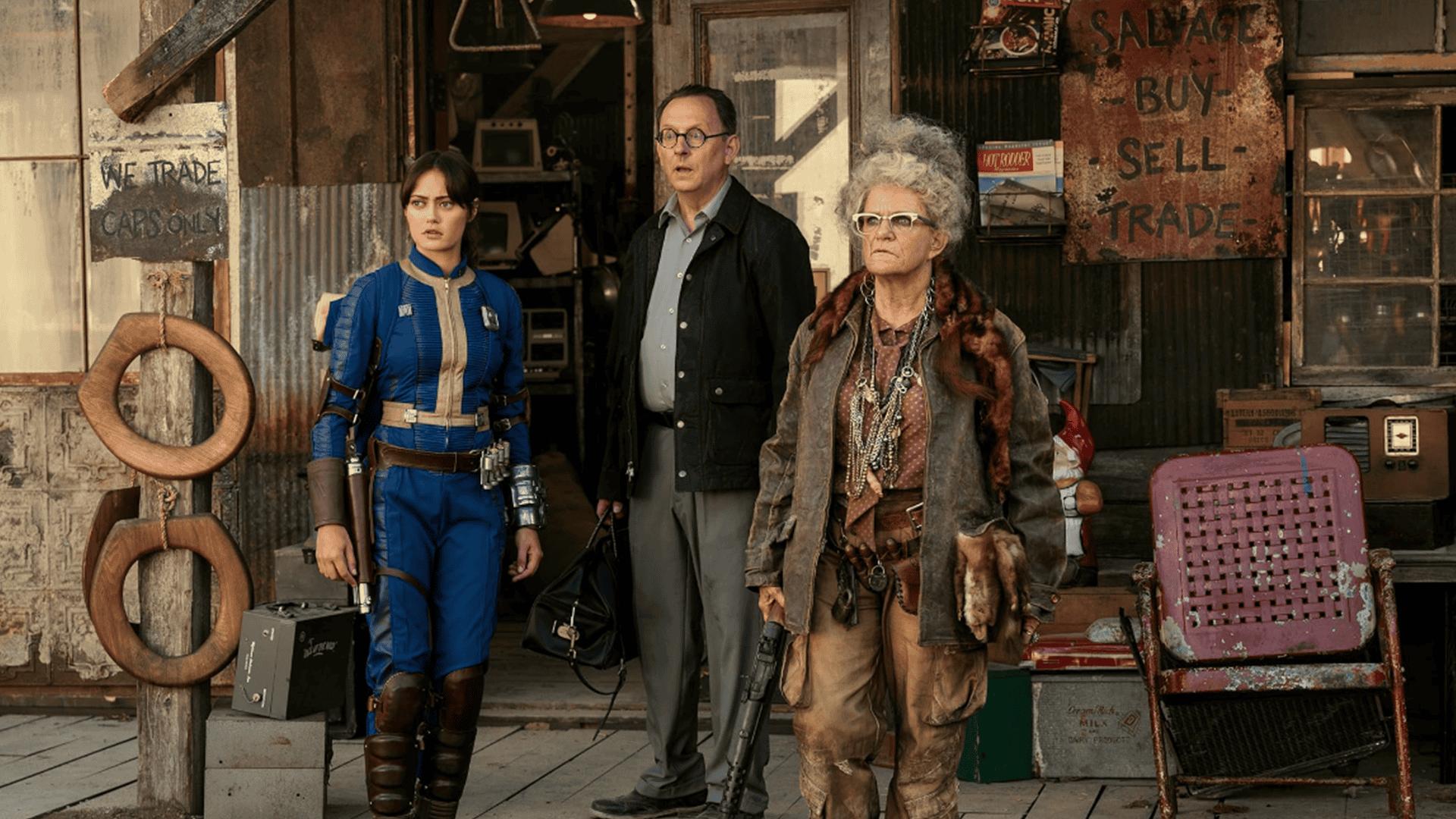
Fallout (the franchise) has expanded beyond its video game origins in 1997 and invites new Vault Dwellers into its post-apocalyptic and retro-futuristic world. “Fallout” (the TV series) recently premiered on Amazon Prime Video, marking another video game-to-TV adaptation that actually hits the nail on the head. Whether or not you’ve watched the show or played the games, if you’re invested in the world of Fallout, here’s your guide to what you need to know before you get the thumbs up.
What Is Fallout? What Is the Lore?

As with any media franchise, you start to wonder where it all started and how it evolved over the years. Fallout has endured for more than 20 years and isn’t about to lose momentum now. Before we get ahead of ourselves with the TV series though, we need to look back at how it all began.
The Lore
The end of World War II established an era of peace and prosperity for the American people thanks to war efforts that led to groundbreaking accomplishments in the utilization of atomic power — essentially thrusting the United States into a technologically advanced new age. Development of new technologies was rapidly increasing and in order to maintain them, the U.S. would need to find a solution for the rapidly decreasing finite sources required to power their new society. But so would the rest of the world.
It wasn’t long before nukes began to go off in the Middle East. In response, the U.S. built a nationwide vault system meant to house and protect its citizens in the case of a nuclear fallout. For the next 20 years, worldwide tensions increased as more of the world went to war. In 2077, China officially struck the U.S. by dropping a barrage of both nuclear and chemical bombs that altered the landscape of the U.S. forever.
The lucky ones of the U.S. population found safety and security within the vaults, where American values are upheld, nurtured, and passed on to future generations. Those living on the surface, especially in big metropolitan areas, were assumed to be decimated. Americans who lived far away from the explosions to survive the initial blast had to adapt to the bio-chemically-altered environment if they hoped to survive. Over time, factions, good and evil, have arisen and hardened under the new conditions of the world while the Vault Dwellers remain safe, naive, and oblivious to it all.
The Fallout video games place the player in the shoes of an emerging Vault Dweller, with each mainline iteration of the series following a different protagonist as they navigate a different region of the U.S.’ shattered landscape in the aftermath of The Great War.
Interplay Productions and Black Isle Studios
Originally intended to be a sequel to video game developer Interplay Productions’ “Wasteland” (1988), the development of “Fallout” exceeded all expectations and laid the foundation for an entire world of its own. The first two installments are stylistically aligned with many role-playing games (RPGs) at the time: isometric world design, turn-based combat, and a litany of consequential choice and dialogue options. “Fallout” and “Fallout 2” were a hit for fans of the genre, both garnering high scores.
However, success was short-lived for Black Isle Studios who developed “Fallout 2.” Subsequent spin-offs scored lower on the scale, and even more iterations of the series, including a film adaptation, were canceled entirely before Interplay forced the Fallout baton to be passed on elsewhere.
Bethesda
“Van Buren” — Interplay’s codenamed mainline Fallout project after “Fallout 2” — marked the end of the studio’s run with the IP and left it up to Bethesda. The game was finally released as “Fallout 3” in 2008, and from there, the franchise took off once more. Under the direction of Todd Howard, the franchise received a complete cosmetic overhaul. Players had the chance to experience the nuclear wastelands from a more immersive, third-person, open-world point of view.
Bethesda invited Obsidian Entertainment, a team of former Black Isle Studio employees, to create an installment for the franchise resulting in one of the most prominent and beloved titles in the series: “Fallout: New Vegas.” Bethesda went on to release several more Fallout titles, such as the mainline installment “Fallout 4” and the spin-off online RPG “Fallout 76.” Howard has confirmed that “Fallout 5” is in development, but many speculate it may be some time before this mainline installment sees the light of day.
How Many Fallout Games Are There? Do You Have to Play Them All?

The Fallout franchise has five mainline games and multiple spinoffs, each one dense with lore. The main titles alone have completion times that can add up to anywhere between 50 and 200 hours, depending on how many side quests and DLC content you decide to explore. I’ve spent the most amount of time exploring the world of “Fallout: New Vegas.” It was my first dive into the series, followed by “Fallout 3” and “Fallout 4.” The first two games are the only games in the entire franchise that share a connecting narrative between protagonists. Beyond that, every game covers a different point in time during the aftermath of The Great War.
It’s all a matter of how invested you are in experiencing this alternate timeline of history. The Fallout community is a dedicated one. If you don’t have the time to dig in and explore every corner of the wastelands (understandably so), there are countless forums and YouTube videos that can fill in the gaps for you. Tapping into the community will help to narrow down the right game that’ll suit your playstyle and interests.
Fallout Games: Release Timeline
- 1997 —“Fallout” (Interplay)
- 1998 — “Fallout 2” (Black Isle)
- 2001 — “Fallout Tactics: Brotherhood of Steel” (Micro Forté)
- 2004 — “Fallout: Brotherhood of Steel” (Interplay)
- 2008 — “Fallout 3” (Bethesda)
- 2010 — “Fallout: New Vegas” (Obsidian)
- 2015 — “Fallout Shelter” (Bethesda)
- 2015 — “Fallout 4” (Bethesda)
- 2016 — “Fallout Pinball” (Zen Studios)
- 2018 — “Fallout 76” (Bethesda)
- 2019 — “Fallout Shelter Online” (Gaea Mobile)
- TBD — “Fallout 5” (Bethesda)
Canceled Games
‘Fallout’ (PlayStation)
This was a top-down shooter meant to launch on the PlayStation. But it was canceled after only a handful of months of preproduction.
‘Fallout Extreme’ (PlayStation 2, Xbox)
A canceled four-man tactical action game, “Fallout: Extreme” promised several single and multiplayer game modes that encouraged strategy and planning. Players build a squad from a selection of various wastelanders, including Brotherhood of Steel members and
super mutants. Similar to the mainline Fallout games, missions and choices were meant to bear weight and affect consequences down the line.
‘Fallout Tactics 2’
The sequel to “Fallout Tactics” that never saw the light of day. Its production began before the original was released. Unfortunately, due to the low sales performance of the first installment, the second never made it beyond conceptual development.
‘Van Buren’
In another timeline, “Van Buren” would have been the “Fallout 3” we all know today rather than the Bethesda-produced installment we have now. The mainline game would’ve placed the player in a prison cell at the start of the game with the choice of declaring themselves innocent or criminal, affecting the initial mechanics and story of the game.
‘Fallout: Brotherhood of Steel 2’
Another sequel that was started before the release of its predecessor, “Fallout: Brotherhood of Steel 2”. It was almost completed before Interplay laid off a majority of its staff. Elements of the game were adopted from “Van Buren” and “Fallout Tactics 2,” following their cancellation.
Fallout Tabletop Games
Roleplay
Fallout’s popularity led to the development of several physical Fallout tabletop games. 2021 saw the release of “Fallout: The Roleplaying Game” a 2d20 system-based game equipped with several sourcebooks and supplements worth of content.
A tile-based game titled “Fallout: The Board Game” offers players the opportunity to compete or collaborate as they take on the roles of Vault Dweller, Ghoul, Super Mutant, Wastelander, and Brotherhood Outcast. Players take turns exploring the radiated lands, facing monstrous enemies, and increasing their influence points as they work toward completing their objectives.
Wargames
“Fallout: Warfare” (based on Fallout: Tactics) is the franchise’s take on the tabletop wargame genre. It contains several of the in-game factions, such as The Brotherhood of Steel, Mutants, and Raiders, as playable characters.
Another addition to Fallout’s wargame catalog, “Fallout: Wasteland Warfare” is a miniature-based, quest-ridden, and enemy-plagued installment in the franchise. Several iconic environments and characters are included and encourage diversity for the player to build their crew. Several rulebook expansions are available, making it a venture well worth investing in.
Canceled Films
One-and-a-half attempts at Fallout films have been made as early as its time at Interplay. Soon after the formation of Interplay Films, the division disbanded with no film as a result. Rumors of a film surfaced in 2009 under Bethesda, but this turned out to be a special feature: “The making of Fallout 3 DVD.” No mention of another film has been made since then, though hope remains as Howard states he has not ruled out the possibility.
Is the ‘Fallout’ TV Series Different From the Games?

“Fallout” the TV series differs from the games in the same way that the games differ from each other. There are markers of a great “Fallout” game present all throughout the show. It has interesting NPCs (non-playing characters), mutated monsters, and iconic villains all tied together with dark, witty writing and the stylish and slow-motion gore we all know and love from our experience with V.A.T.S. Narrative-wise, the show is closer to “Fallout 3” and “Fallout 4” than it is to “Fallout: New Vegas.” “New Vegas” is the only spin-off game whose protagonist isn’t a Vault Dweller.
The show touches on beats in the games that made me want to jump right back in as soon as the episode was over. It tells its own story while respecting and following the rules of the established universe and leaves me wondering what, if any, narratives I might’ve missed on my first playthroughs of the game. You can stream all eight episodes of “Fallout” on Amazon Prime Video.
Do You Have to Play the Fallout Games Before Watching the TV Series?

The show does a great job of explaining the rules of the environment and providing an unfamiliar viewer with enough material to keep up. Nods to the game are present from time to time and spotting their live-action counterpart can deepen immersion but doesn’t take away from the show otherwise. Not knowing that the mutated beast in Episode 2 is a reference to its in-game counterpart doesn’t make the scene any less terrifying.
It’s important to note that in-game quests won’t be as linear as the series makes it out to be either. Often, accepting a quest from any given NPC might take you in the complete opposite direction of where your main quest needs you to be, and that’s okay. It’s that hinted sense of unlimited exploration and potential that I really hope the show taps into as it expands on the world of Fallout and invites the viewers to experience it in-game for themselves afterward.
What Game Should You Start With if You’re New to the Fallout Franchise?

It’s impossible to pick between “Fallout 3” and “Fallout: New Vegas.” On one hand, “Fallout 3” was a huge stepping stone for the franchise and a pivotal moment for the series. It offered a new way to experience the wastelands. It was built by a team of developers who were longtime fans of the series and who had the budget to make it one of the biggest open-world games of its time.
“Fallout: New Vegas” delivers a narrative that only the original team behind the games could’ve delivered, and that’s exactly how it came to be. It steps away from the formula and offers a uniquely fresh perspective you won’t find in any other Fallout game. The main story sits at about 27 hours for both, but if you’re after the complete story be prepared to spend over 100 hours on each. Trust me — it’s worth it.
